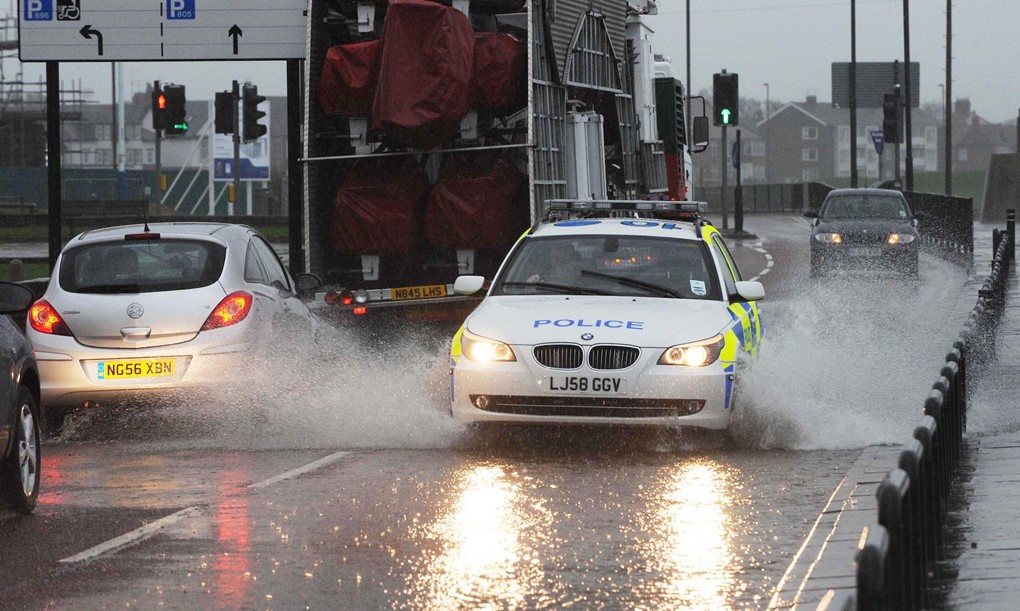Is it really illegal to Splash through a puddle while driving?
Although many people can see this act as a simple bit of fun, it has been a hotly debated topic on our community chat group and others over the past couple of years. But is it actually illegal to drive through a puddle?
This past week has seen storm Brendan pour gallons of water over Blackpool and The Fylde Coast leaving many of our regularly flooded hotspots filled with excess rainwater. Many of the roads around our area have potholes and other divets and recesses that water persists in after a heavy rain.

Just this morning…
In fact just this morning Ian posted in our group that He and his three-year-old daughter were deliberately splashed by a BMW driver just this morning while he was walking her to nursery on Whitegate Drive. Ian claims that the driver active deliberately and could be seen laughing about it after the incident occurred. It’s clear to us that this sort of instance would be classed as inconsiderate driving at the very least…
Not Always Illegal
Despite many people claiming that simply driving through a large puddle is illegal, the truth of the matter is a little more complex.
The Road Traffic Act 1988 states that a person may be charged with the offence of careless and inconsiderate driving if they drive a mechanically propelled vehicle on a road or other public place without due care and attention or without reasonable consideration for other perso’s using the road or place.

While this does leave some room for genuine accidents and circumstances where driving through a puddle could not otherwise be avoided, it does give a little bit of hope to any pedestrian who has been purposely splashed by a motorist acting in mean spirit.
Other factors
This doesn’t however take into consideration the damage that can be caused by water in times of localised flooding being pushed like a bow wave in front of a vehicle which can cause it to lip up over boundaries, spilling onto private property from the road.
During our investigations over the years we have identified 2 properties – one in Bispham and one in Anchorsholme that are badly affected after a downpour – but then continually affected with drivers pushing through what looks like shallow water which then encroaches onto the residents property and in their house.
This local publication is supported by Smith’s Man and Van Services
Where’s your proof…
We believe that it would be extremely difficult to prove that somebody had intentionally driven through a puddle in order to drench somebody without having clear video footage of any incident or a number of independent witnesses who all saw the same things happening at the same time. It would also likely be looked upon as a waste of the police’s time by some members of the public. But still – genuine reports of careless driving should always be reported.
Citizens Advice
In an article from 2017 the Citizens Advice Bureau explain that splashing a pedestrian is not an offence “unless it can be proved that the motorist acted carelessly or deliberately.”
“ if it can be proved that the motorist actor deliberately they can be charged with driving without due care and consideration for other road users”
In some other recent cases we have learned about, Even mother’s pushing babies in prams and school children have been targeted by callous Motorists driving close through deep puddles.
What’s the penalty
If a driver does end up being reported for an offence under the Road Traffic Act for driving purposely through a puddle, it is likely that they would receive a £100 fine and 3 penalty points which would likely have to be issued by an officer at the side of the road or by post after an investigation.
If however a driver should refuse the notice they would potentially face a magistrate who could impose a fine of up to £5,000 – although receiving the maximum amount would be very unlikely and would have to exhibit aggravating factors to the offence.
General Advice to Motorists
So the general rule of thumb, although it is not illegal in all cases to drive through a puddle it is best practice to not do it if it can be avoided at all.







